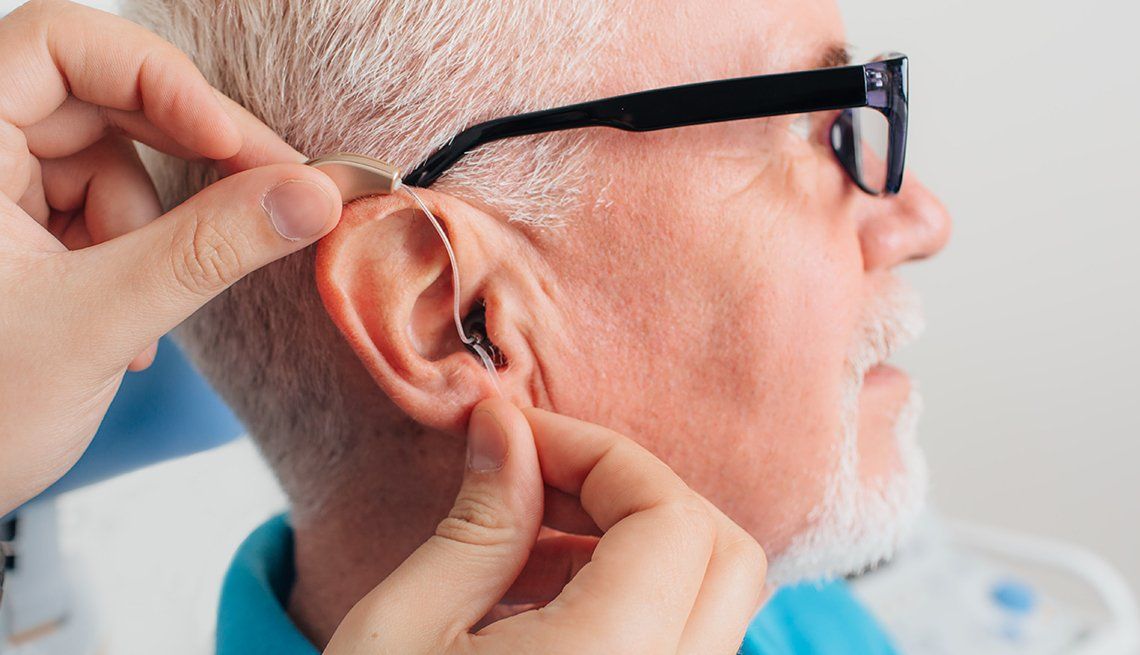The future of hearing aid technology is difficult to predict, but we eagerly watch for the latest devices and improvements introduced by manufacturers every year.
Advancements in hearing aid technology are incredible to observe. With every new generation of hearing aids, there are boosts in the internal processing capabilities and new features are added that make the devices easier to operate and optimize – for both the wearer and the clinician.
More importantly, newer hearing aids do a better job at matching expectations while minimizing the hurdles or annoyances that were present in previous generations.
Here are the advancements in hearing aid technology that we are excited about – and what it means for your hearing.
Rapid progress in hearing aid technology is normal
Just like your smartphone or computer, rapid progress in hearing aid technology is not only common – but expected. Manufacturers continue to push the limits of what is possible in hearing aids, which is notable considering the challenges of hearing aid technology:
- Hearing aids are incredibly tiny
- They are expected to remain reliable and perform optimally throughout their lifetime
- Hearing aids must be durable and withstand regular use in places that are unfriendly to electronics (that is, your ears)
- They perform advanced calculations and are expected to adapt seamlessly to various environments and situations
Despite these challenges, manufacturers continue to develop technology that outperforms and outlasts yesterday's hearing aids. And these changes are introduced at an incredible pace.
For example, we have witnessed rapid progress in hearing aid batteries. Only a few years ago, we were hesitant to recommend rechargeable batteries. Previous generations of rechargeable batteries sacrificed processing power or would not last a full day.
Today, rechargeable batteries no longer sacrifice power, and they are just as convenient as you expect. It only took a few generations to advance the technology to deliver convenient recharging, all-day power and no sacrifices to processing power.
And we expect many features to continue to evolve to offer more benefits with fewer trade-offs.
Future of hearing aid technology
The hearing aid advancements that we are looking forward to likely won't revolutionize the technology. Instead, they will continue the ongoing evolution of the technology so hearing aids simply work better for more people.
For you – this means that hearing aids will better match your hearing needs and adapt to different rooms, environments or noises.
For clinicians – this means that we can better optimize your hearing aids to the specific challenges that you face.
Here is what we expect from hearing aid technology as it progresses in 2022 and beyond.
Improved processing power
Just as computers get faster every year, so do hearing aids. Improved processing power allows hearing aids to make better decisions according to the information they receive.
For example, hearing aids evaluate the signals they receive and decide how to balance the output to help you hear the sounds you want while reducing the noises you don’t want to hear. As hearing aids get quicker and smarter, they can use more information to make better decisions – and make decisions quicker.
What this means for you: You will notice fewer situations or places where the hearing aids aren't providing the balance or types of sounds that you expected. More importantly, your hearing aids will naturally adjust to environments that were previously difficult.
Technology we are watching: Improved processing power enables advanced technologies in Widex Moment hearing aids, such as real-time speech enhancements, quicker signal processing times, and the ability to capture a wider range of softer or louder sounds without distortion. Together, these advancements contribute to more natural sounds and were the reason the Widex Moment was an honoree at the 2021 Consumer Electronics Show Innovation Awards.
Expanded AI technology
As fancy as artificial intelligence (AI) tech sounds, it is simply the ability of hearing aids to leverage improved processing power. They can evaluate more information through more layers of analysis, all while learning what works and what doesn't.
What this means for you: You can expect your hearing aids to work better in complex situations. From managing unwanted feedback from wind to clarifying sounds related to speech, AI works behind the scenes so there will be fewer circumstances where you notice your hearing aids.
Technology we are watching: Leverage deep learning technology, the Oticon More series of hearing aids have 12 million sound scenes built into the programming. The hearing aids analyze the environment to seamlessly select the sound scene that is most appropriate to reduce background noise, manage feedback and enhance speech.
Easier to fit the wearer
When we talk about "hearing aid fit," the physical fit is only a small part of the equation. A properly fitted hearing aid matches the specific hearing levels of the wearer, meaning they are precisely programmed to deliver support for the hearing challenges you experience.
Advancements in hearing aid technology provide more settings and channels to fine-tune and more data for clinicians to analyze.
What this means for you: Your clinician will be able to better program and adapt the hearing aids according to the data from your hearing test and your hearing challenges. There isn’t one “correct” way to program hearing aids, so your clinician can leverage the additional settings and channels to better personalize your devices.
Technology we are watching: For you, the Phonak Audéo Paradise hearing aids deliver crisp natural sound and come with a smartphone app to monitor and adjust the devices. For your clinician, Phonak’s innovative app captures data that can be used to fine-tune the hearing aids – even remotely.
Rechargeable batteries are here to stay
New rechargeable batteries allow all-day power without sacrificing performance. As the batteries continue to improve, we expect manufacturers to continue pushing the limit for hours of operation while delivering the power necessary for advanced processing.
What this means for you: For many people, rechargeable hearing aids are easier to integrate into their daily routine. Simply charge the devices while you sleep or on-the-go in portable chargers.
Technology we are watching: The new Pure Charge&Go AX hearing aids from Signia boast up to 36 hours of use on a single charge, and you can use the portable charger to recharge on-the-go. These hearing aids also include two separate processors to simultaneously manage the sounds you want to focus on and background noises.
Integration with more devices
Hearing aids have long spearheaded connectivity tech – early Bluetooth connectivity was introduced to hearing aids even before the first iPhone was released. Over the years, more levels of connectivity have been introduced to seamlessly connect hearing aids to devices in your pocket, car, home and beyond.
Looking forward, hearing aids will better integrate with accessories and assistive listening devices. We expect the options for streaming to continue to grow.
What this means for you: You can expect hearing aids to allow for seamless streaming to your personal devices without finicking with the settings. Also, more accessories (like remote microphones and phone adaptors) will be introduced or improved.
Technology we are watching: Remote microphones can zoom into the sounds you want to hear, such as a group conversation within a noisy room. The Phonak Roger On remote microphones adapt to pick up the person that is speaking, whether in one-on-one conversations or in large auditoriums. You can use the mobile app to pinpoint the mic towards the source you want to hear and adjust the microphone’s settings.
Technology will help you focus on what matters
Improvements in hearing aid technology are solving some of the challenges that were once ubiquitous with hearing aids. With every generation, more and more of these challenges are disappearing.
For both wearers and clinicians, we can focus more on the aspects of your hearing aids that work well – and how to best leverage the technology for success.









